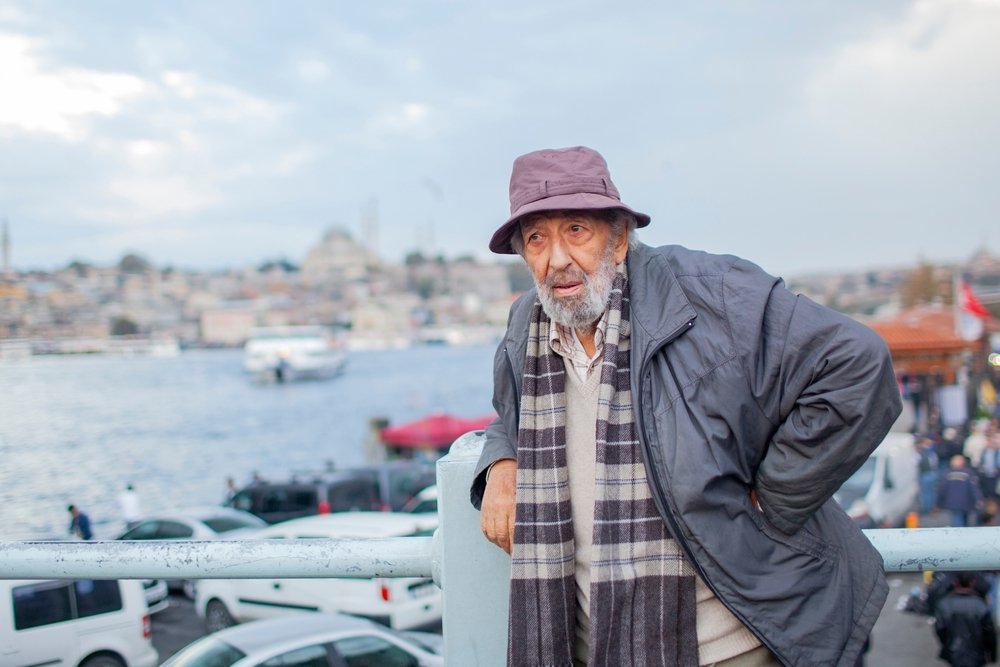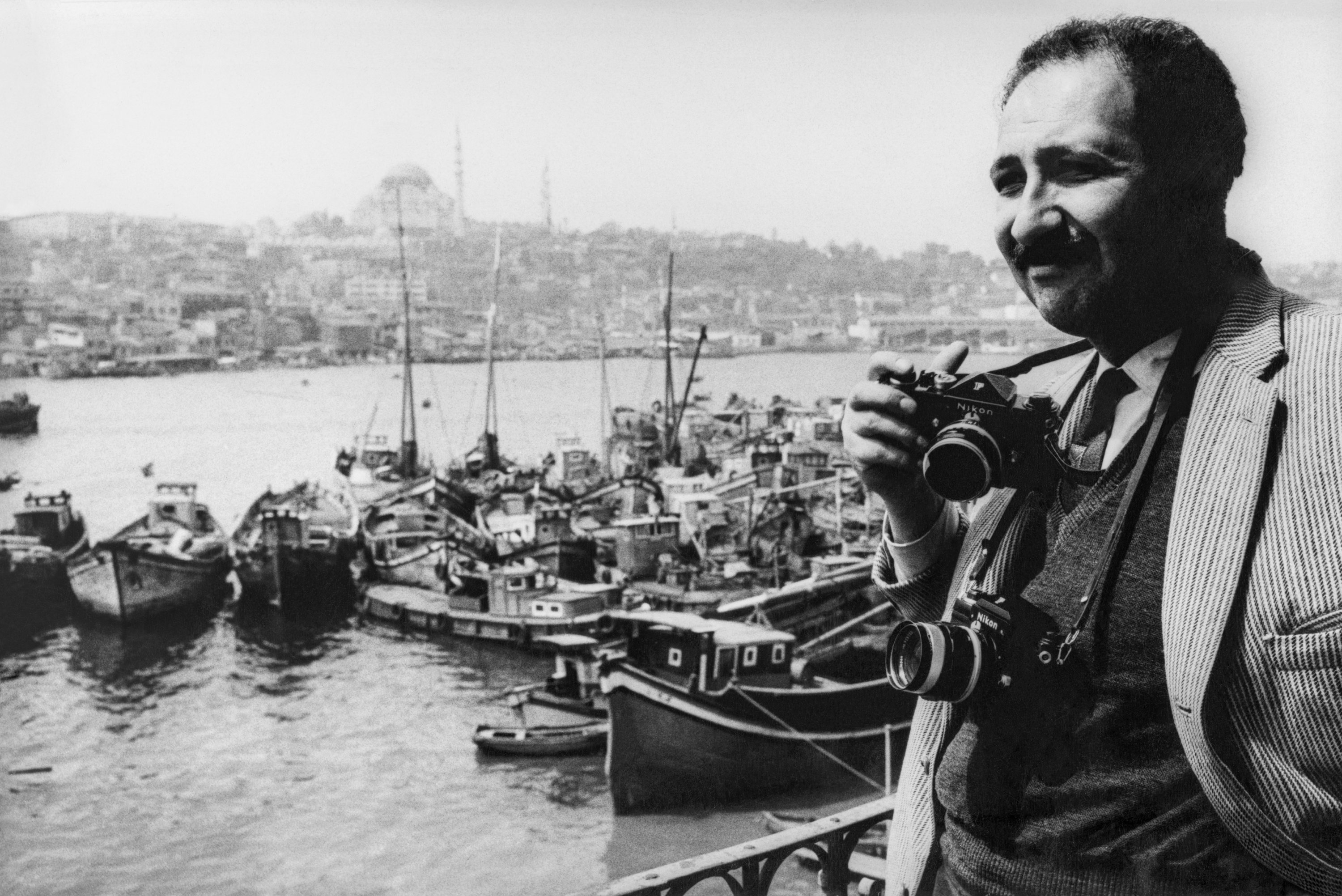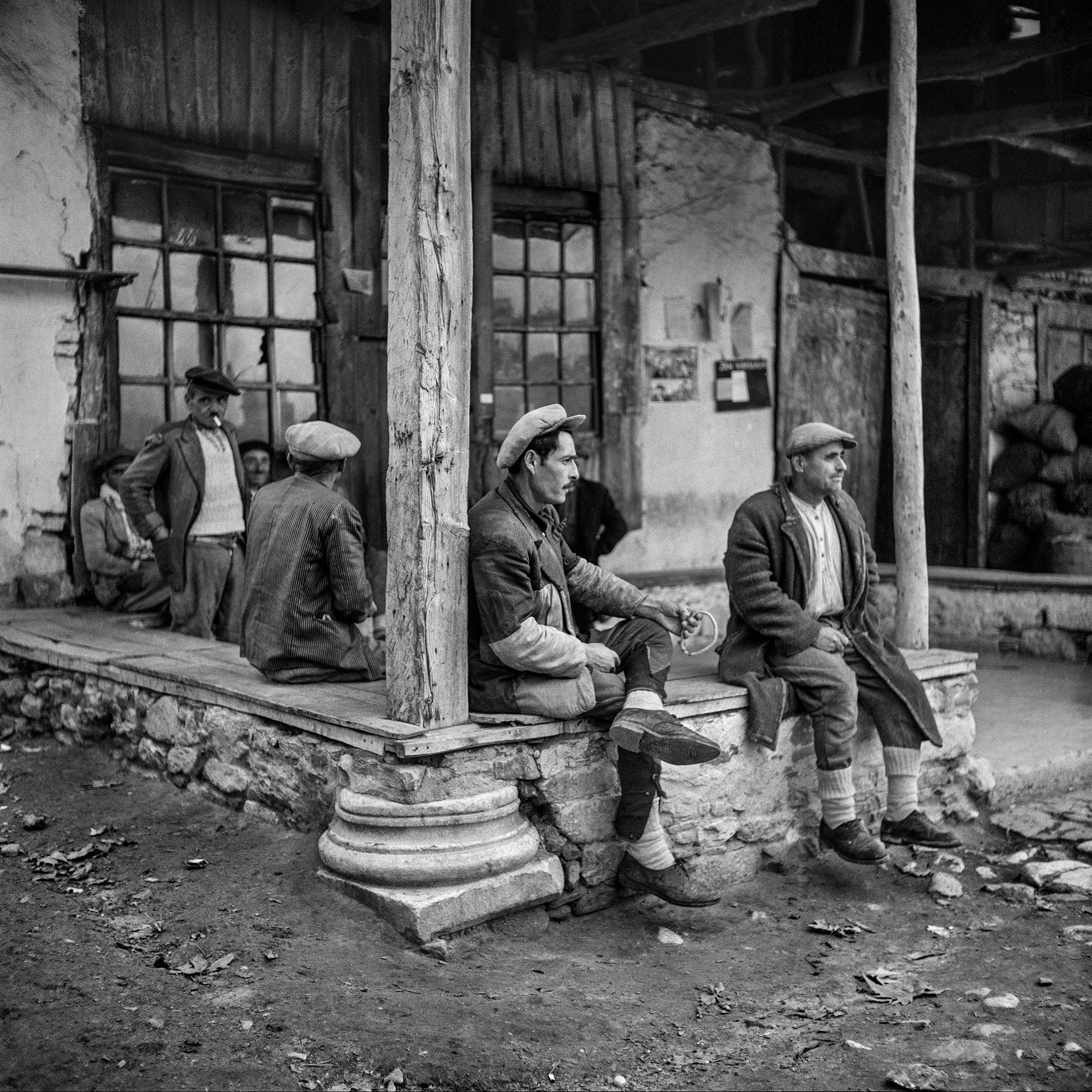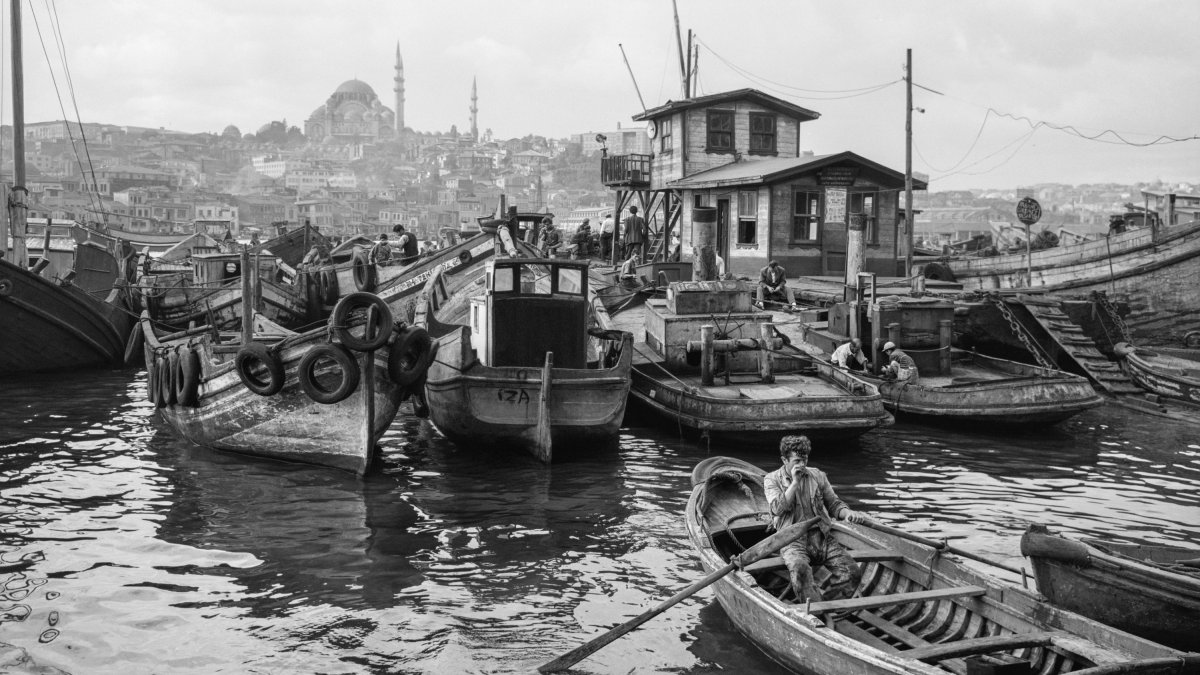It has been seven years since the death of Ara Güler, the legendary photojournalist whose photographs hold a significant place in both Türkiye’s and the world’s visual memory.
Born Mıgırdiç Ara Derderyan on Aug. 16, 1928, in Istanbul’s Beyoğlu district, Ara Güler inherited his first name from the Ararat King Ara Geghetsik, known as “Handsome Ara,” and his middle name from his grandfather, Mıgırdiç. After the implementation of Türkiye’s Surname Law, he adopted the surname “Güler.”
Growing up in Beyoğlu, Güler received his early education under the supervision of nannies and tutors at home before attending several prestigious schools: the Bomonti Armenian Mihitaryan Primary School, Galatasaray High School and Armenian Getronagan High School.

Ara Güler poses for the camera, Istanbul, Türkiye, Sept. 19, 2025. (Shutterstock Photo)
Early career
From a young age, Güler was captivated by cinema. Encouraged by his father, who gifted him a camera during his high school years, Güler began to explore photography seriously. After graduating from high school, he enrolled in Türkiye’s first journalism institution, the Journalism Institute at Istanbul University’s Faculty of Economics.
During his university years, Güler worked for several Armenian newspapers, including Jamanak. His first real journalistic experience came in 1950 when he joined Yeni İstanbul, one of Türkiye’s leading newspapers at the time.
After completing his military service, he worked briefly as a reporter for Hürriyet newspaper before joining the newly launched Hayat magazine, where he quickly became head of photography. Around this time, having graduated from Istanbul University’s Faculty of Economics, he became the only Turkish member of the American Society of Media Photographers.
International recognition
After meeting legendary photographer Henri Cartier-Bresson in 1953, Güler joined the Paris-based Magnum Agency. In 1958, he was appointed Near East photojournalist for renowned magazines such as Time-Life, Paris-Match and Der Stern.

A photo of Ara Güler on display at the “Miscellaneous Istanbul” exhibition. (Courtesy of Ara Güler Museum)
The Photography Annual Anthology in the U.K. named him among the world’s top seven photographers. In 1962, Güler earned the prestigious “Master of Leica” title in Germany, a rare honor, and the Swiss magazine Kamera dedicated a special issue to him.
His powerful images documenting the 1960 coup in Türkiye and the 1964 Cyprus Operation were distributed worldwide through international magazines and agencies. Güler’s work has been featured in numerous important photography publications and exhibited internationally.
Traveling extensively, Güler produced photo essays published globally via the Magnum Agency. He photographed and interviewed a wide range of luminaries, including authors Yaşar Kemal, Aziz Nesin, Kemal Tahir and Orhan Kemal; political figures like Ismet Inönü, Winston Churchill and Indira Gandhi; intellectuals such as John Berger and Bertrand Russell; as well as artists like Bill Brandt, Alfred Hitchcock, Ansel Adams, Imogen Cunningham, Salvador Dali and Pablo Picasso.
Publications, awards
Güler received the first-place award in photojournalism from the Turkish Journalists Association in 1979. In 1980, Karacan Publishing released a collection of his photographs as a book.
The photographs of Mimar Sinan’s works, which he spent years working on, were published under the title “Turkish Style” in the U.K., U.S. and Singapore and as “Demeures Ottomanes de Turquie” in France.
Güler continued to set photographic standards and style with his work. In 1991, he photographed “The Sixth Continent,” a book by the famous writer Cevat Şakir Kabaağaçlı (Fisherman of Halicarnassus), for the Turkish Ministry of Foreign Affairs.
Legacy
Güler was treated for heart and kidney failure at a private hospital in Istanbul’s Şişli district. On Oct. 17, 2018, his heart stopped twice but was revived. However, despite further medical efforts, he passed away later that day after his heart stopped again.

A photograph by Ara Güler shot in Aphrodisia’s ancient city Aydın, 1962. (Photo courtesy of Ara Güler Museum)
Following his death, numerous political figures, academics, journalists and business leaders, including President Recep Tayyip Erdoğan and then-Armenian President Armen Sarkisyan, expressed condolences.
On Oct. 20, 2018, a memorial ceremony was held in Galatasaray Square. His funeral service took place at the Church of Three Altars in Beyoğlu, after which he was laid to rest in the Şişli Armenian Cemetery.
Ara Güler Museum
Güler’s works are part of collections at prestigious institutions such as the National Library of France in Paris, the George Eastman Museum in Rochester, U.S., and the Sheldon Collection at the University of Nebraska. His photographs are also exhibited at the Museum Ludwig in Cologne and the Das Imaginare Photo Museum.
Having created over 2 million photographs during his career, Güler received numerous honors, including the Presidential Culture and Arts Grand Award and the Ministry of Culture and Tourism’s Grand Award for Culture and Arts.
From 1964 to 2018, Güler held over 100 solo and group exhibitions worldwide, including Germany, Italy, France, Japan and the U.S.
Reflecting the soul of Istanbul through his lens, the Ara Güler Museum opened on Aug. 16, 2018 – his 90th birthday – at Şişli Bomontiada. The museum, dedicated to sharing his artistic legacy and inspiring life with a broad audience, was granted Special Museum status by the Ministry of Culture and Tourism in 2022.

The Daily Sabah Newsletter
Keep up to date with what’s happening in Turkey,
it’s region and the world.
SIGN ME UP
You can unsubscribe at any time. By signing up you are agreeing to our Terms of Use and Privacy Policy.
This site is protected by reCAPTCHA and the Google Privacy Policy and Terms of Service apply.

